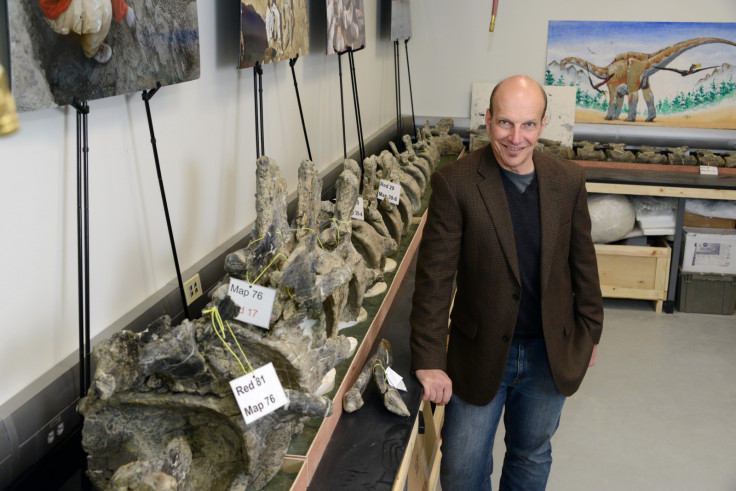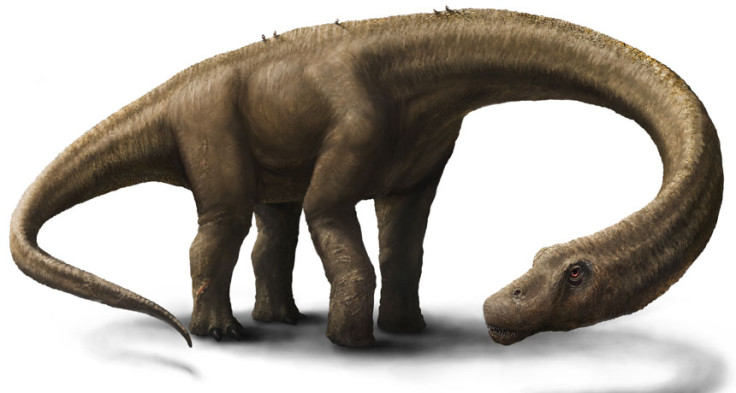Supermassive Dinosaur 'Dreadnoughtus' Discovered in Argentina Bigger than Seven T-Rex

The exceptionally complete skeleton of a new supermassive sauropod dinosaur has been discovered in Argentina, offering an unprecedented window into the anatomy and biomechanics of the largest animals ever to walk the Earth.
Dreadnoughtus schrani was the largest land animal, for which mass can be accurately calculated, at 85ft long and weighing around 65 tonnes.
Scientists at Philadelphia's Drexel University discovered over 70% of the bones of Dreadnoughtus, excluding the head. The skeleton was found in southern Patagonia in Argentina and lived approximately 77 million years ago in a temperate forest at the southern tip of South America.
"Dreadnoughtus schrani was astoundingly huge," said Kenneth Lacovara, an associate professor in Drexel University's College of Arts and Sciences.
"It weighed as much as a dozen African elephants or more than seven T. rex. Shockingly, skeletal evidence shows that when this 65-tonne specimen died, it was not yet full grown. It is by far the best example we have of any of the most giant creatures to ever walk the planet."
The new dinosaur belongs to a group of large plant-eaters known as titanosaurs. Some of the heaviest creatures ever to walk the earth, the femur of the skeleon measures over six feet tall.

"With a body the size of a house, the weight of a herd of elephants, and a weaponized tail, Dreadnoughtus would have feared nothing," Lacovara said.
"That evokes to me a class of turn-of-the-last century battleships called the dreadnoughts, which were huge, thickly clad and virtually impervious."
As the dinosaur was likely too large to fear any predators, it was named Dreadnoughtus.
To grow as large as Dreadnoughtus, a dinosaur would have to eat massive quantities of plants.
"Every day is about taking in enough calories to nourish this body. I imagine their day consists largely of standing in one place," Lacovara said.
"You have this 37-foot-long neck balanced by a 30-foot-long tail in the back. Without moving your legs, you have access to a giant feeding envelope of trees and fern leaves. You spend an hour or so clearing out this patch that has thousands of calories in it, and then you take three steps over to the right and spend the next hour clearing out that patch."
In order to calculate the mass of quadrupeds, measurements are taken from the thigh bone and upper arm bone. As both bones were discovered, scientists were able to measure Dreadnoughtus with confidence.
Researcher Matthew Lamanna said the skeleton is the most complete out of all previously discovered giant titanosaurians: "The biggest titanosaurs have remained a mystery, because, in almost all cases, their fossils are very incomplete."
To better visualise the skeletal structure of Dreadnoughtus, the team digitally scanned all of the bones from both dinosaur specimens, creating a "virtual mount" of the skeleton that is now publicly available for download from the paper's open-access online supplement.
The find was described in the journal Scientific Reports.
© Copyright IBTimes 2025. All rights reserved.






















